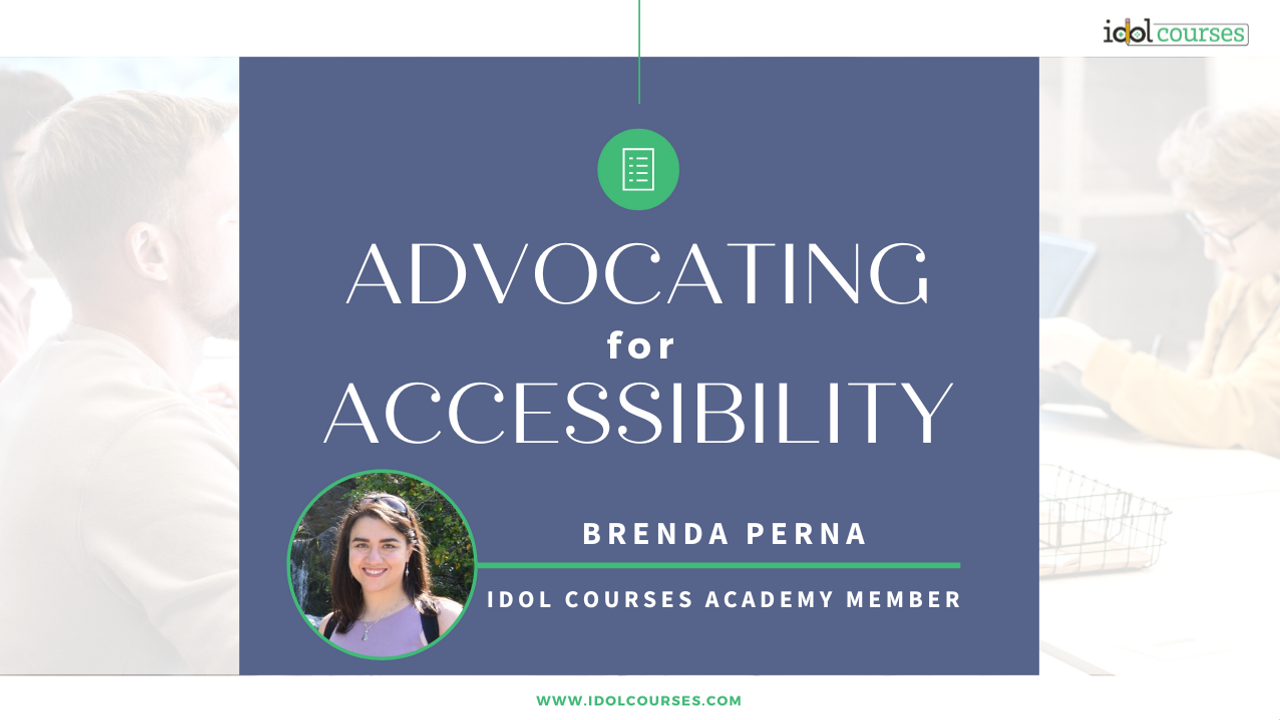Advocating for Accessibility
Dec 09, 2022
It’s now becoming common knowledge that humans have a wide range of cognitive differences, in addition to the physical ones that are more readily apparent. However, we’re still just scratching the surface with our understanding of conditions such as Autism Spectrum Disorder. With that emerging comprehension comes persistent stigmas. I’ve experienced them in my own family and encountered them in the learning and development field.
In fact, what spurred me to write this was getting blocked by a doctor who has an active social media and podcast presence because I asked her to consider not using background music that contained vocals, as the vocals competed with what she said aloud. That doctor also is a professor at a state university, which made me wonder if she provides accommodations for her neurodivergent students. (Learning differences don’t go away when a person enters medical school, after all.)
This reminded me that we still have a long way to go. Those of us in the learning and development (L&D) community have a duty not only to learn about and implement accessibility strategies and guidelines, but also to promote them. Otherwise, the burden falls solely on those who have a disability, and they’ve led the way since the 1970s.
Is that news to you? It was to me when I started researching for this blog post. Check out the links at the end to learn about the history of the disability rights movement in the United States. These are some of the major developments to get you started:
- The Civil Rights Act of 1964
- Section 504 of the Rehabilitation Act of 1964
- The 504 Sit-ins of 1977
- The Individuals with Disabilities Act (IDEA) of 1990, originally known as the Education for All Handicapped Children Act of 1975
- The Americans with Disabilities Act of 1990
As L&D professionals, we should have a solid understanding not only of the history of disability rights and accessibility, but also what the research and guidance say. Look into what has been done and what still needs to be done to make physical spaces more inclusive, wherever you are in the world. Also consider digital spaces, since many aspects of learning and development are now technology-heavy and web-based.
Here are resources to help us all ensure that what we design and develop is accessible to all learners:
- https://webaim.org/intro/
- https://www.w3.org/WAI/standards-guidelines/
- Accessibility - Wakelet
- This is a collection that I curated from other instructional designers and educators.
- https://www.idolcourses.com/blog/Accessibility
- https://www.idolcourses.com/blog/idoljargon
- Focus on the paragraph about 508-compliance.
- https://www.idolcourses.com/podcasts/become-an-idol/episodes/2147512875
- Pay close attention to the segment from 3:03 - 5:45 that deals with assistive technology. The interviewee describes how educational technology (ed tech) can help create a more inclusive learning experience.
- https://www.idolcourses.com/blog/id-and-ed-tech-they-intersect-more-than-you-may-realize
- I wrote about how ed tech can and should go hand-in-hand with instructional design to increase accessibility.
Unless you’re brand new to learning and development, you’re well aware of a foundational principle called Universal Design for Learning (UDL). Now consider this: UDL is a continuation of the ADA and the Disability Rights Movement. Universal Design deals specifically with making physical spaces more accessible, such as lowering the sidewalk at crosswalks and placing bumps there so people with mobility limitations or visual impairment can safely cross the street. Universal Design for Learning is kind of an extension of that; it takes into account things like visual, hearing, and cognitive impairments so learners can access the content being taught.
Let’s think about that a little more. If you are normally able-bodied but get injured and have to use crutches or a wheelchair, you benefit from the ADA and Universal Design. If you are in a noisy environment and have to rely on closed captioning for a webinar or e-learning course, you benefit from UDL. (For more examples of UDL strategies, please see https://udlguidelines.cast.org/.)
As we recognize how much of the ADA and current Web Content Accessibility Guidelines (WCAG) are owed in large part to members of the disabled community, yet with every one of us reaping those hard-won benefits, we all must advocate for greater accessibility.
Even if you yourself don’t identify as disabled or neurodivergent, please be an ally.
Here are the links I mentioned above, along with some notes:
- https://www.ncld.org/resources/
- This has an easy-to-follow timeline of the history of the Americans with Disabilities Act (ADA).
- Key developments are the creation of IDEA and Section 504.
- https://acl.gov/ada/origins-of-the-ada
- This contains primary sources (i.e. interviews with people who were directly involved in the passage of the ADA).
- https://lawlibguides.sandiego.edu/ada_history
- How the ADA Changed the Built World | Crip Camp | Netflix
- These are two especially powerful quotes from the video:
- “The ADA is a floor. It’s not a ceiling.”
- “Think of disability rights as basic human rights.”
- Judith Heumann: Our fight for disability rights -- and why we're not done yet | TED Talk
- The Power of 504 (full version, open caption, English and Spanish)
- The 504 Sit-in was a protest that took place in San Francisco, California in 1977.
- The sit-in opened the door to government regulations that required public spaces to be accessible to all people.
- https://sites.ed.gov/idea/IDEA-History
- This deals with special education, which gradually developed alongside the disability rights movement in the 1970s and was further solidified in the 1990s.
Let’s do better, as we learn and know better.
About the author:
Brenda is a learning designer with a passion for making learning accessible and meaningful. She loves to create and innovate. Check out her work at brendaperna.com and connect with her on LinkedIn.
Stay connected with news and updates!
Join our mailing list to receive the latest news and updates from our team.
Don't worry, your information will not be shared.
We hate SPAM. We will never sell your information, for any reason.


